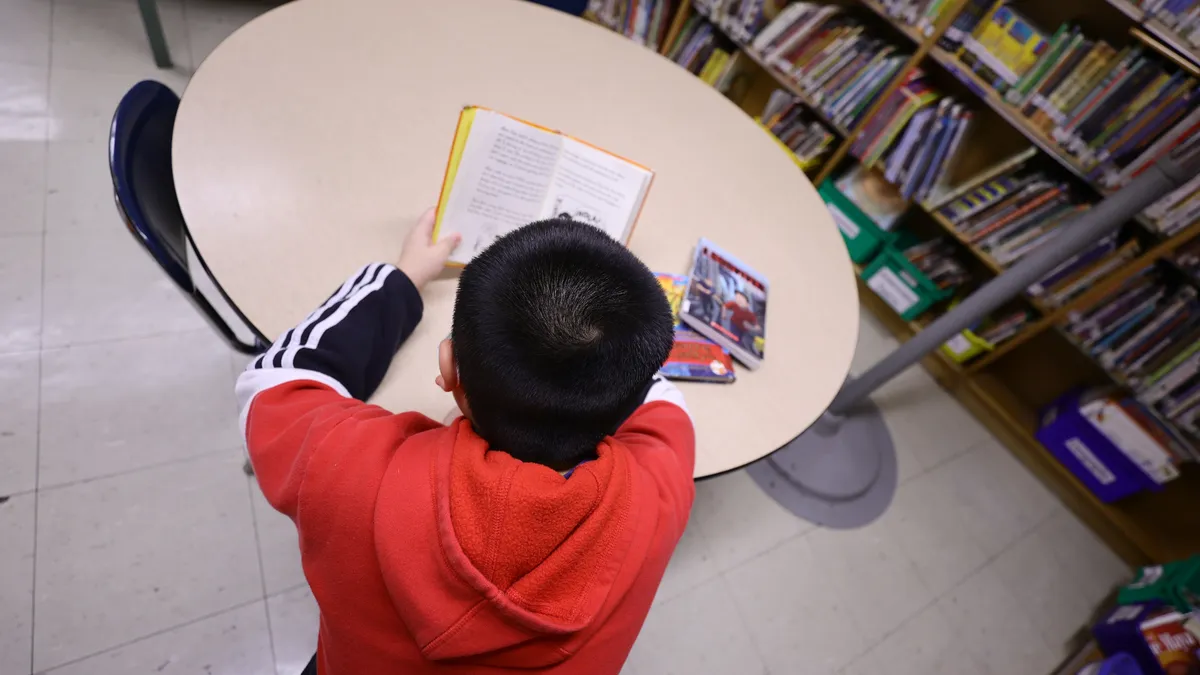Dive Brief:
-
With the end of pandemic relief aid in sight, after-school providers are preparing to scale back on their size and services of their programs, according to a nationwide survey released last month by Afterschool Alliance, a nonprofit that seeks to expand after-school program access.
-
Some 40% of respondents said they plan to reduce programming, 38% will downsize staff, and 36% will cut back on the number of students they serve, the survey found.
-
Meanwhile, over a quarter (27%) said they are unable to operate at pre-pandemic levels now, with 61% of those saying staffing played a role in that situation. A majority — 80% — reported concerns that children needing after-school programming cannot access it.
Dive Insight:
Throughout and following COVID-19 school closures, after-school programs provided a range of services aimed at not only helping student academic performance, but also providing school connectedness and increasing student engagement.
During even the height of the pandemic, these programs continued to offer online services, including everything from cheerleading practice to one-on-one homework help.
Then, following the building closures and subsequent dip in student academic performance, schools relied heavily on after-school programs to provide tutoring.
A majority of U.S. public schools (87%) offered some type of after-school programming during the 2023-24 school year, according to a 2023 survey released by the National Center for Education Statistics.
Some 64% offered academically focused after-school programming, and schools in high-poverty neighborhoods serving more than three-quarter of students of color were more likely to offer these programs compared to the rest of the nation, NCES found.
According to the Afterschool Alliance report, most providers (80%) are concerned that there are children needing after-school programming unable to access it. Over a quarter (27%) say they are unable to operate at pre-pandemic levels, and a majority of those (61%) say that staffing played a role. Other reasons include a lack of interest from families, insufficient funding and higher program costs.
While only a small portion of after-school providers received pandemic relief funds, those that did reported higher rates of employing certified teachers, providing wraparound services such as mental health services, and increasing compensation, according to the Afterschool Alliance survey of more than 8,000 such programs across the United States. The survey was conducted between October and December 2023.
Providers that received pandemic funds, however, were also more likely to report worrying about the program's long-term funding and future than those that had not. Overall, a majority of after-school programs said they were concerned about staffing (81%) and long-term funding (73%).
"Those concerns are sure to worsen as pandemic relief funding winds down in coming months," said Afterschool Alliance Executive Director Jodi Grant in an April 25 statement. "But we are not making nearly the investments we need in afterschool and summer learning programs.”
In fact, staffing remains "an immense challenge" for after-school programming in the 2023-24 school year, according to the Afterschool Alliance report. The same percentage that reported staffing concerns also reported taking at least one step to combat the issue, including increasing hourly wages, offering professional development opportunities, and providing free child care for staff.














